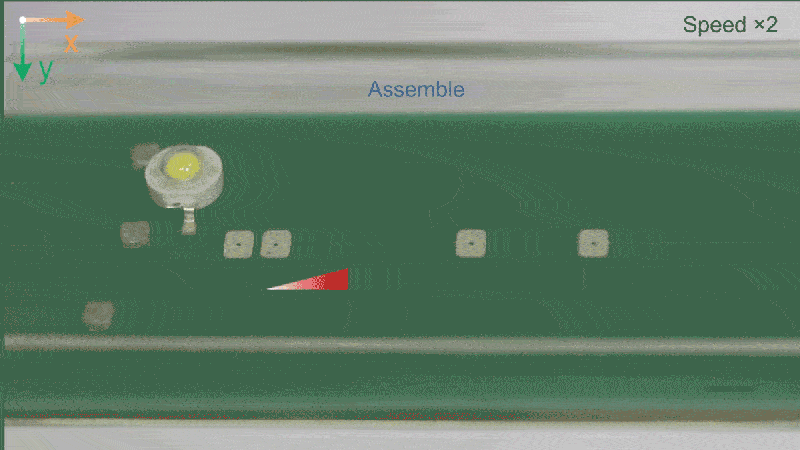
The creation of a robot capable of altering its physical state between solid and liquid may seem like an impossible concept to us, something limited to science fiction for all the difficulties it poses. To avoid doubts and make us understand each other at the first we are talking about something similar to the T-1000 that we could see in the famous movie Terminator 2, an android that was capable of changing from solid to liquid state at will.
Creating a T-1000 is not something that is within the reach of science today, and I am not sure that it will ever be, but the truth is that a group of scientists from the University of Hong Kong has achieved an important progress in this sense, since they have been able to develop a small robot that can change its state from solid to liquid, and that it can solidify again later, as you can see in the animated image that you will find just below these lines (it recovers the solid state, but not its original form, which is given by hand by scientists).
As we can read in the documentation related to this project, it is a magnetoactive phase transitional matter robot, and contrary to what we might think, they are not being designed to become combat weapons, but rather would have medical purposes.
I give you an example, a robot of this type could be swallowed as a solid pill small in size, and once in the stomach, or other target area, it would turn into liquid to surround a foreign body, and solidify again to trap it and carry it out of the body once the robot is naturally expelled through the digestive system.
They could also be used for repair complex machinery, and I’m going to give you another example. Imagine a machine that has lost a screw in an area that is difficult to access. This robot could be used to reach the space where that screw is missing, it would turn into liquid to fill said space and once inside it would become solid.
This robot is made of neodymium-iron-boron magnetic microparticles embedded in gallium, which melts at 29.8 degrees Celsius, a value close to room temperature that we can find in many corners of the planet between spring and summer. In its solid form, this material can support objects up to 30 times its mass. To melt it you need to use magnets with custom magnetic fields, which means you don’t need an external heat source.
Undoubtedly a very interesting advance that shows that science will always be able to surprise us, and that liquid metals have great potential. If you want to go deeper you can find all the details of this project by following this link.





